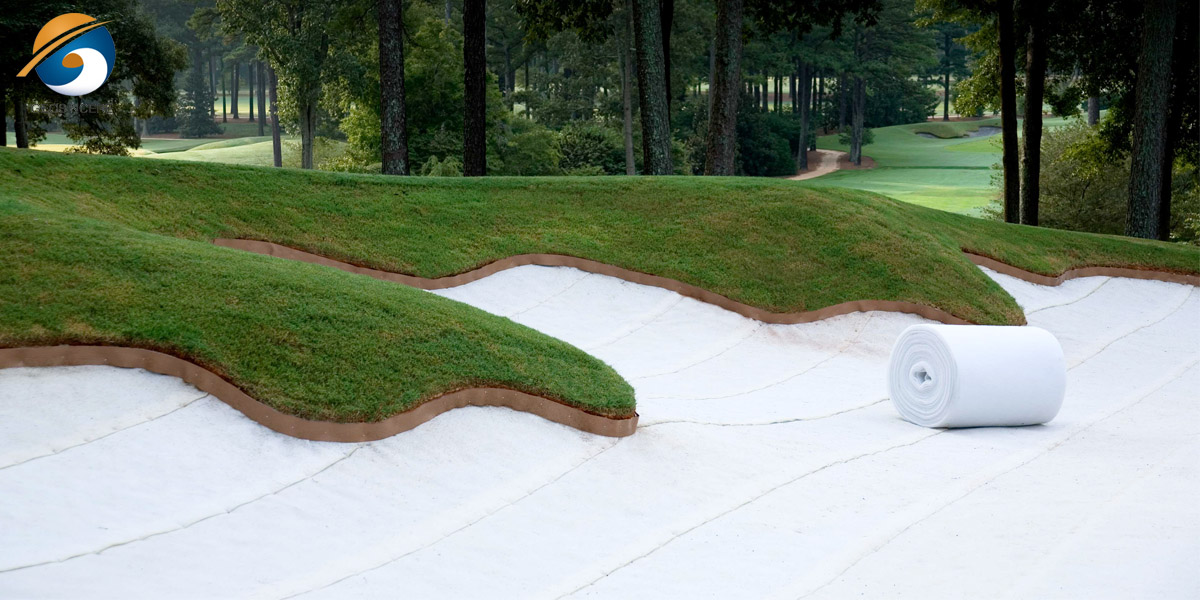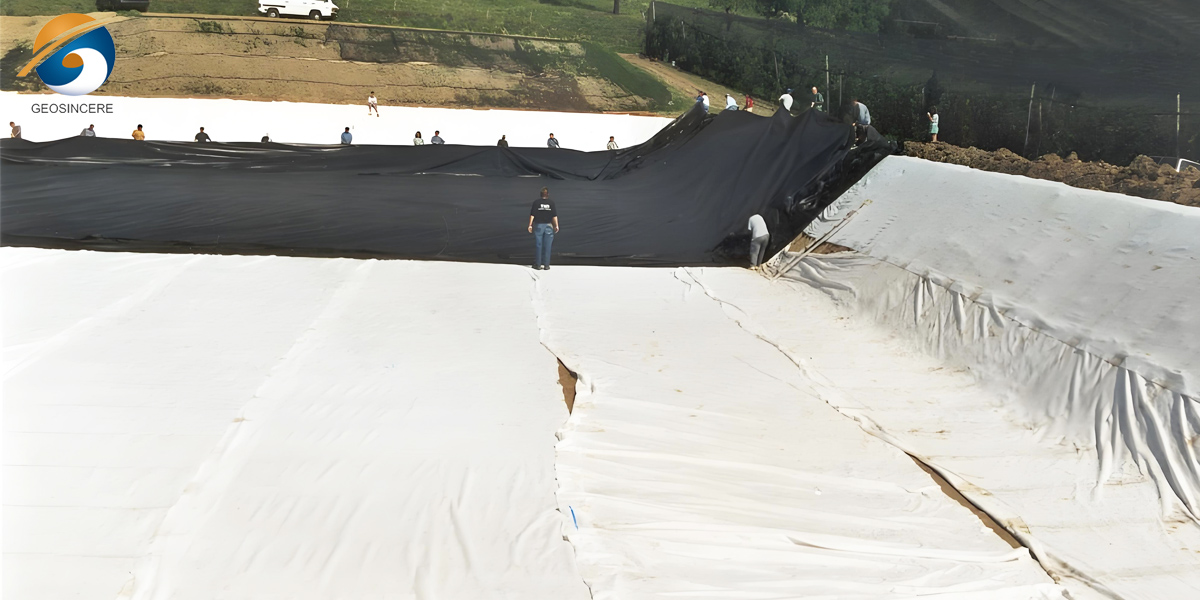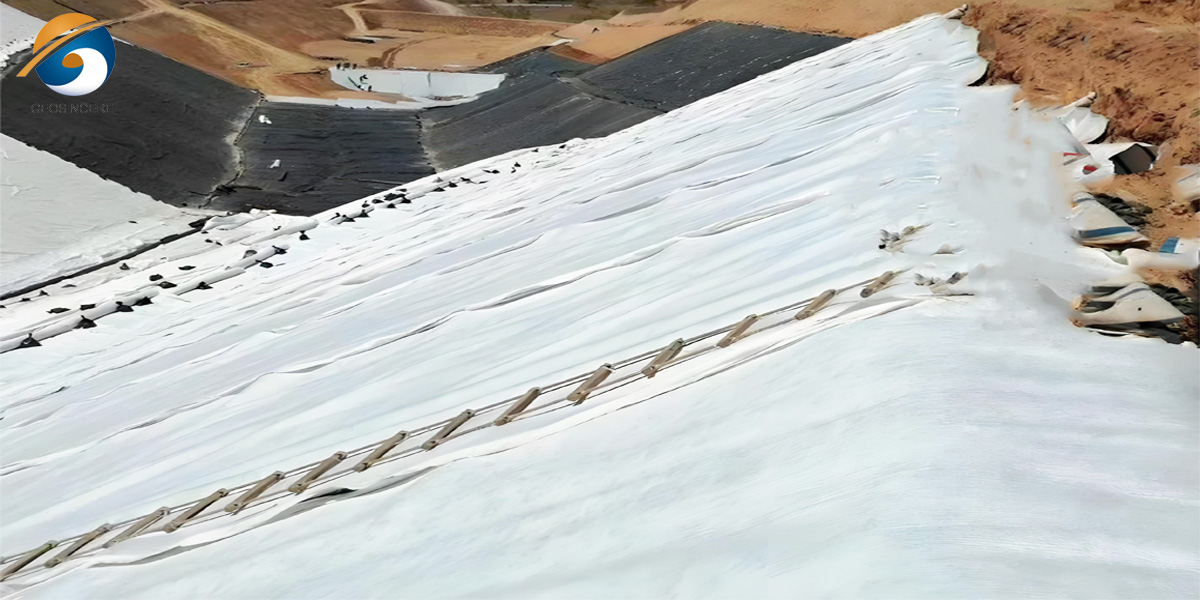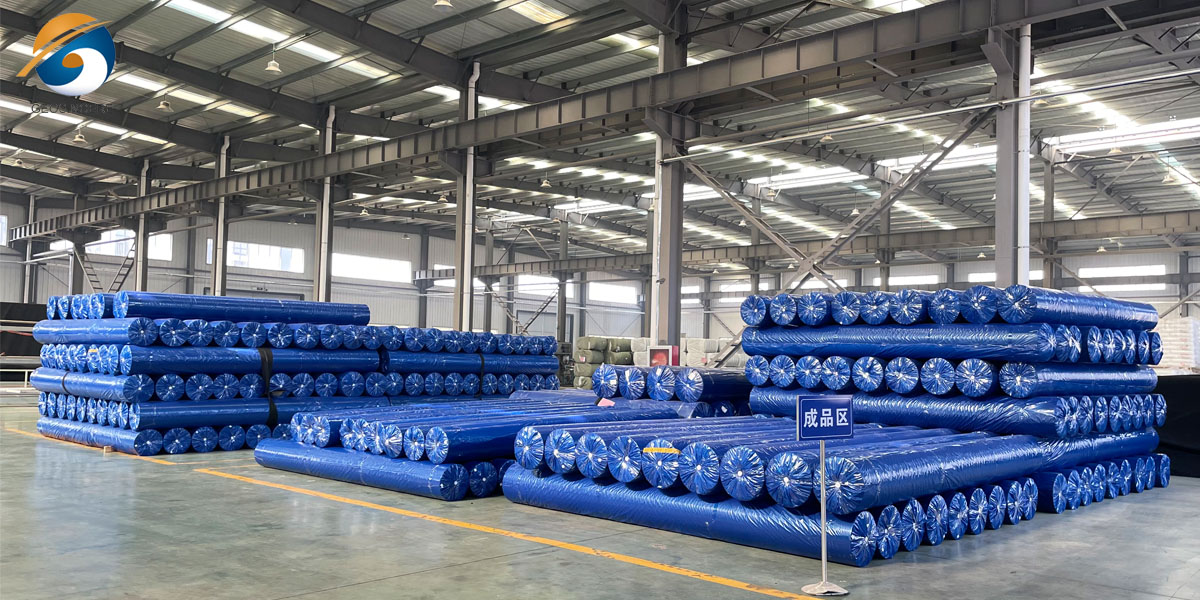The Ultimate Guide to Nonwoven Filter Fabric and Its Applications
In present day enterprise and environmental engineering, nonwoven filter fabric has emerge as an critical material. Whether in water treatment, air purification, civil engineering, agriculture, or packaging, this high-performance fiber material performs a quintessential role.
As a expert exporter of geosynthetics and environmental materials, GEOSINCERE is dedicated to offering international clients with brilliant nonwoven filter material solutions. This article will introduce this fabric comprehensively from six perspectives: fundamental knowledge, manufacturing processes, overall performance features, software fields, determination guide, and global market prospects.
1. What is Nonwoven Filter Fabric?
1.1 Nonwoven Filter Fabric Definition
Nonwoven filter fabric material is a fibrous internet fabric produced barring standard fabric techniques (such as spinning or weaving). Instead, it is made by way of mechanically, thermally, or chemically bonding fibers collectively immediately to structure a sheet with a unique pore shape and filtration properties. Compared with regular woven filter cloth, Non woven geotextile fabric demonstrates choicest filtration efficiency, breathability, and provider existence due to its special structure.
From the point of view of fabric science, nonwoven filter material belongs to the class of "nonwoven materials." The International Organization for Standardization (ISO) defines it as: “a sheet, web, or batt of fibers that are bonded collectively by using friction, cohesion, or adhesion, or a mixture of these methods, aside from paper, woven fabrics, knitted fabrics, tufted fabrics, and wet-felted products.”
1.2 Nonwoven Filter Fabric Material Composition
Common uncooked substances for nonwoven filter fabric include:
- Polyester fiber (PET) fabric: High strength, acid and alkali resistance, warmth resistance up to 150℃, precise climate resistance, extensively used in water therapy and geotextile filtration.
- Polypropylene fiber (PP) fabric: Lightweight, adjustable hydrophilicity, chemical resistance (pH 2–12), melting factor round 165℃, cost-effective, appropriate for air filtration and disposable scientific products.
- Polyamide (PA) or different purposeful fibers fabric: Excellent abrasion resistance, excessive moisture absorption, used in high-dust gasoline filtration and different environments such as excessive temperature or sturdy corrosion.
1.3 Nonwoven Filter Fabric Filtration Mechanisms
The filtration impact of nonwoven geotextile fabric on the whole depends on:
- Mechanical interception: Particles large than the pore measurement are retained.
- Inertial impaction: Particles deviate from the glide line due to inertia and are captured with the aid of fibers.
- Electrostatic adsorption: Certain methods impart expenses to the nonwoven fabric, successfully attracting satisfactory particles.
2. Production Processes of Nonwoven Filter Fabric
The manufacturing technique of nonwoven filter fabric performs a necessary position in figuring out their structural properties, durability, and overall performance in one-of-a-kind applications. Each system presents special advantages, making nonwoven fabric appropriate for a large range of industries. The predominant manufacturing strategies encompass the following:
2.1 Needle-Punched Nonwoven Filter Fabric
This manner entails robotically entangling fibers the use of particularly designed barbed needles. As the needles again and again penetrate and pull the fibers, they interlock to structure a dense and long lasting fabric.
2.1.1 Needle-Punched Nonwoven Filter Fabric Features
- High porosity and incredible permeability, which lets in environment friendly water or air flow.
- Outstanding mechanical power and resistance to tearing.
- Good dimensional balance beneath load.
2.1.2 Needle-Punched Nonwoven Filter Fabric Applications
- Widely used in non woven geotextile fabric for soil stabilization and reinforcement.
- Effective in drainage structures to filter water whilst holding soil particles.
- Common in street development to separate layers and forestall soil erosion.
2.2 Meltblown Nonwoven Filter Fabric
In this process, polymer resins (such as polypropylene) are melted and extruded via satisfactory spinnerets. High-speed warm air stretches the polymer into microfibers, which are amassed as a net on a conveyor belt.
2.2.1 Meltblown Nonwoven Filter Fabric Features
- Extremely quality fibers with diameters frequently in the micron or submicron range.
- Small and uniform pore size, ensuing in excessive filtration efficiency.
- Lightweight but advantageous in taking pictures exceptional particles.
2.2.2 Meltblown Nonwoven Filter Fabric Applications
- Widely used in air filtration systems, inclusive of HVAC filters.
- Essential for clinical masks and respirators due to most reliable filtration.
- Utilized in shielding apparel the place barrier overall performance is critical.
2.3 Thermal-Bonded Nonwoven Filter Fabric
This technique bonds fibers collectively by means of making use of warmness and pressure, frequently the use of calendaring rollers or warm air. The warmth melts thermoplastic fibers, which solidify upon cooling to shape a flat and secure sheet.
2.3.1 Thermal-Bonded Nonwoven Filter Fabric Features
- Smooth and flat floor with uniform thickness.
- Moderate tensile power in contrast to needle-punched or spunlace fabrics.
- Pleasant hand feel, making it appropriate for merchandise requiring comfort.
2.3.2 Thermal-Bonded Nonwoven Filter Fabric Applications
- Packaging materials, presenting light-weight and inexpensive solutions.
- Disposable products, such as hygiene objects and scientific supplies.
- Backing layers in laminates or composite materials.
2.4 Spunlace (Hydroentangled) Nonwoven Filter Fabric
This manner makes use of high-pressure water jets to entangle fibers and structure a web. The absence of adhesives or thermal bonding makes spunlace fabric mainly gentle and flexible.
2.4.1 Spunlace (Hydroentangled) Nonwoven Filter Fabric Features
- Excellent softness and cloth-like texture.
- Even pore structure, offering steady filtration properties.
- Good electricity barring the want for chemical binders.
2.4.2 Spunlace (Hydroentangled) Nonwoven Filter Fabric Applications
- Medical and hygiene products, together with gowns, drapes, and surgical covers.
- Wipes for non-public care, industrial cleaning, and family use.
- Filtration membrane substrates in liquid and air filtration systems.
By cautiously deciding on the proper manufacturing process, producers can diagram non woven geotextile filter fabric with the required stability of strength, permeability, softness, and filtration effectivity to meet the wants of distinctive industries.
3. Performance Advantages of Nonwoven Filter Fabric
Nonwoven filter fabric have come to be crucial in industrial, environmental, and family filtration applications. Their special mixture of physical, mechanical, and chemical homes makes them most reliable to many common woven fabric and paper-based filters. The following benefits provide an explanation for why nonwoven filter fabric are extensively chosen throughout numerous industries:
3.1 Nonwoven Filter Fabric - High Filtration Efficiency
Nonwoven needle punch filter fabric designed with uniform and controllable pore sizes, which make certain unique filtration performance. This shape permits them to correctly seize suspended solids, dust, bacteria, and different contaminants in each liquid and gaseous media.
- Capable of casting off particles ranging from macro-level impurities to best micro-particles.
- Offers excessive dust-holding capacity, extending the carrier lifestyles of filters.
- Widely used in air purifiers, water therapy systems, and industrial dirt collection.
3.2 Nonwoven Filter Fabric - Excellent Air and Water Permeability
The interconnected fiber shape approves free passage of air or beverages whilst nonetheless keeping dependable filtration. Unlike dense woven geotextile fabric, nonwovens mix permeability with retention efficiency.
- Ensures clean fluid go with the flow besides immoderate stress loss.
- Maintains steady overall performance even in long-term non-stop operations.
- Ideal for drainage systems, geotextile applications, and clinical air filtration membranes.
3.3 Nonwoven Filter Fabric - High Mechanical Strength
Depending on the manufacturing method, nonwoven filter fabrics can obtain most beneficial mechanical properties. Techniques such as needle punching, thermal bonding, and spunlace entangling grant sturdiness and resistance to bodily stress.
- High tensile and tear resistance, appropriate for heavy-duty industrial use.
- Maintains structural integrity underneath stretching, folding, and vibration.
- Extensively utilized in avenue engineering, building filtration layers, and shielding clothing.
3.4 Nonwoven Filter Fabric - Good Chemical Stability
Nonwoven fabric made from polyester (PET) or polypropylene (PP) showcase robust resistance to most acids, alkalis, and natural solvents. This property makes them appropriate for difficult environments the place chemical publicity is common.
- Withstands harsh wastewater therapy conditions.
- Suitable for oil filtration, chemical plants, and industrial waste gasoline purification.
- Maintains overall performance even after extended contact with corrosive substances.
3.5 Nonwoven Filter Fabric - Lightweight and Customizable Design
Nonwoven filter fabric are inherently light-weight due to their low density. At the equal time, they can be custom-made in phrases of thickness, weight (GSM), pore size, and fiber kind to meet precise challenge requirements.
- Offers convenient handling, installation, and processing.
- Can be laminated or blended with different substances for multi-functional composite filters.
- Allows producers to tailor options for household, industrial, or environmental applications.
3.6 Environmentally Friendly and Recyclable
Sustainability is an vital component in present day cloth selection. Nonwoven filter fabric are regularly made from recyclable uncooked materials and can be reused or repurposed after provider life.
- Contributes to waste discount and round financial system practices.
- Reduces environmental influence in contrast to disposable paper-based filters.
- Aligned with international sustainable improvement desires (SDGs), making them a inexperienced desire for eco-conscious industries.
With these advantages—high efficiency, permeability, durability, chemical resistance, flexibility, and sustainability—best non woven geotextile fabric have come to be a desired answer in water treatment, air purification, construction, healthcare, and environmental safety industries.
4. Application Fields of Nonwoven Filter Fabric
Nonwoven filter fabrics are versatile substances used throughout a couple of industries due to their adaptability, durability, and efficiency. Depending on the manufacturing manner and raw materials, they can be tailor-made for specialised functions ranging from water cure to clinical products. The foremost software fields include:
4.1 Nonwoven Filter Fabric for Water Treatment Engineering
Nonwoven filter nonwoven drainage fabric is indispensable in keeping easy and protected water for industrial, municipal, and family use. Their shape ensures each high quality particle retention and easy water flow.
4.1.1 Applications:
Drinking water purification – doing away with sediments, natural matter, and microorganisms.
Industrial wastewater therapy – filtering heavy metals, chemicals, and suspended solids.
Sewage therapy plant filter layers – enhancing organic remedy effectivity with the aid of maintaining sludge.
Pretreatment for reverse osmosis (RO) – defending membranes from clogging via great particles.
4.1.2 Key Material:
PET short fiber needle punched nonwoven is the most extensively used kind in this area due to its excessive strength, permeability, and resistance to clogging.
4.2 Nonwoven Filter Fabric for Air Purification and Environmental Protection
Clean air is crucial for fitness and industry, and nonwoven filter fabric play a central function in taking pictures dust, pollutants, and dangerous particles.
4.2.1 Applications:
Air cleaner filters – trapping dust, pollen, and allergens in households and offices.
Industrial dirt collector luggage – filtering first-rate particles in cement, steel, and chemical plants.
Medical masks and defensive garb – supplying barrier safety towards bacteria, viruses, and aerosols.
Automotive cabin air filters – casting off PM2.5, pollen, and odors for passenger comfort.
4.2.2 Key Material:
Meltblown nonwoven is the core cloth for PM2.5 and virus filtration, thanks to its ultrafine fibers and electrostatic adsorption properties.
4.3 Nonwoven Filter Fabric for Civil Engineering and Infrastructure
In geotechnical and development projects, nonwoven filter fabric are broadly used as geosynthetics to enhance structural stability, manage seepage, and assist drainage.
4.3.1 Applications:
Drainage layers for roads and railways – stopping water accumulation and subgrade weakening.
Filtration and drainage for landfills – permitting leachate to omit whilst stopping soil migration.
Anti-seepage structures for dams and tunnels – presenting secondary safety collectively with geomembranes.
Coastal safety and dike reinforcement – stabilizing soil and resisting erosion.
4.3.2 Key Function:
Filter – protecting soil whilst permitting water flow.
Separator – stopping mixing of distinct soil layers.
Reinforcement – enhancing load-bearing capability and slope stability.
In geosynthetic engineering, nonwoven fabric serve more than one roles:
4.4 Nonwoven Filter Fabric for Agriculture and Horticulture
Black polypropylene non woven filter fabric additionally aid sustainable farming and horticultural practices by way of enhancing soil and water management.
4.4.1 Applications:
Agricultural irrigation filtration – making sure easy water for vegetation by way of filtering sand and debris.
Greenhouse overlaying substances – imparting mild diffusion and local weather control.
Weed manage and moisture-retaining cloth – decreasing evaporation and suppressing weed boom except chemicals.
Aquaculture water purification – preserving easy water for fish and shrimp farming.
4.4.2 Benefits:
Enhances crop yield and quality.
Reduces reliance on pesticides and chemical weed killers.
Promotes environment friendly aid conservation in irrigation systems.
With such extensive software fields, non woven filter have end up an indispensable cloth for water and air purification, construction, agriculture, healthcare, and manufacturing, making them a cornerstone of modern-day industrial and environmental solutions.
5. How to Select the Right Nonwoven Filter Fabric?
For worldwide buyers, deciding on the proper nonwoven cloth requires thinking about the following key factors:
5.1 Application Environment
Water treatment: PET needle-punched nonwoven, extremely good permeability.
Air purification: Meltblown nonwoven, excessive filtration efficiency.
Civil engineering: Heavier PET nonwoven with increased thickness for durability.
5.2 Technical Parameters
Weight (gsm): Determines thickness and filtration capacity.
Pore measurement (μm): Defines filtration precision.
Tensile power (kN/m): Affects load-bearing capacity.
Permeability coefficient: Determines water flow.
5.3 International Certifications
ISO, CE, SGS take a look at reports.
Certifications are quintessential for coming into international markets.
5.4 Supplier Capability
Choose suppliers with large-scale manufacturing and vast export trip to make sure steady first-class and supply.
6. Why Choose GEOSINCERE Nonwoven Filter Fabric ?
6.1 Quality Assurance
Strict uncooked cloth determination with top rate PET and PP fibers.
Full-process pleasant manage to make certain regular weight, thickness, and pore size.
6.2 Customization Capability
Production of nonwoven fabric in weights from 100gsm–1200gsm, widths from 1m–6m, and more than a few roll lengths.
OEM and ODM offerings for foreign places customers’ precise needs.
6.3 Rich Export Experience
Complete export documentation and certifications.
Familiarity with European, North American, Middle Eastern, and African market standards.
6.4 One-Stop Solutions
In addition to nonwoven filter fabric, GEOSINCERE additionally elements geomembranes, geogrids, geocells, and a full vary of geosynthetics.
7. Conclusion
Nonwoven Filter Fabric is no longer simply a material—it is a “guardian” of current society in water useful resource protection, air purification, civil engineering, and scientific safety.
With the world demand for environmental safety and infrastructure improvement rising, its market possibilities are broad.
If you are searching for a dependable provider of nonwoven filter fabric, GEOSINCERE is your depended on partner. We no longer solely furnish outstanding merchandise however additionally expert technical guide and global shipping capability.
Contact us these days to request a quote and samples, and begin your challenge cooperation with GEOSINCERE Geosynthetics !








